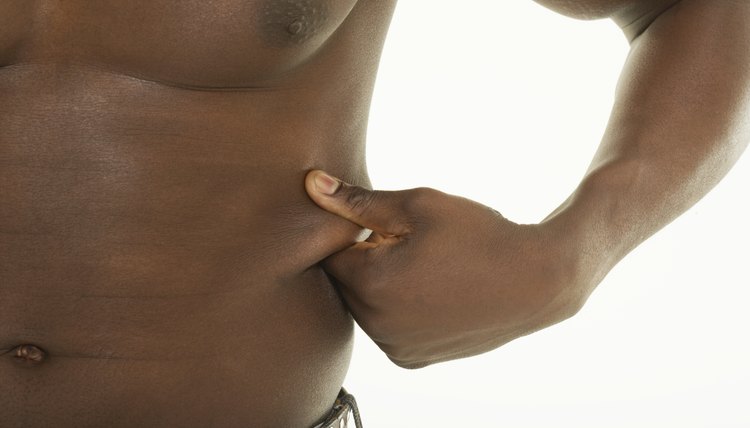American Council on Exercise Body Fat Percentage

Having too much body fat not only increases your risk for chronic diseases, it may cause social anxiety and decreased self-esteem. The University of Washington reports that while average adult men and women have body-fat percentages of 17 to 19 percent and 22 to 25 percent, respectively, ideal body-fat percentages are 13 to 17 percent for men and 20 to 21 percent for women. Fortunately, the right diet and exercise program can help reduce fat in problem areas.
Determining Your Body-Fat Percentage
There are several methods for determining your body-fat percentage. The American Council on Exercise (ACE), reports that the most common method used by personal trainers is the skinfold-measurement technique, which is fairly accurate and inexpensive. This method measures subcutaneous fat in different areas of your body using skinfold calipers. Other techniques include underwater weighing, duel-energy x-ray absorptiometry, bioelectrical impedance and body-mass index (BMI). Even though BMI overestimates body-fat percentage in muscular individuals, it’s quick and easy. To determine your BMI, the Centers for Disease Control and Prevention suggest multiplying your body weight in pounds by 703, dividing that number by your height in inches and then dividing the new number by your height in inches again. This gives you your estimate body-fat percentage.
ACE General Recommendations
Ideal body-fat percentages vary by gender. Women are allowed more body fat than men, according to ACE. Desirable body-fat percentages for physically-active women range from 10 to 24 percent. For men, the desirable range goes down to 2 to 17-percent body fat. Women are classified as obese if their body fat is more than 32 percent, while men are considered obese if they hold more than 25-percent body fat, according to ACE. Too little body fat can cause weakness, fertility problems and malnutrition, while excess body fat increases your disease risks and can drain your energy levels.
Recommendations for Athletes
Many athletes find that lower body fat percentages lead to improved athletic performance. However, women should not drop below 10-percent body fat and men should avoid holding less than 2-percent body fat, notes ACE. ACE also suggests that the ideal body-fat percentage for female athletes is 14 to 20 percent, while the desirable body-fat range for male athletes is 6 to 13 percent. Athletes who hold too little body fat may experience decreased athletic performance, fatigue and lack of menstruation in women. However, too much body fat can also inhibit athletic performance and stamina during training sessions.
Ways to Reduce Fat
If you’re holding excess body fat, exercising regularly and altering your diet can help you become leaner. Boosting your protein intake is especially beneficial for body-fat reduction. A study published in a 2010 issue of “Diabetes Care” reports that participants lost the most weight and body fat when they participated in resistance training – such as weightlifting -- regularly, reduced their total calorie intake and consumed high-protein diets. Good protein-rich foods include lean meats, seafood, skinless poultry, egg whites, low-fat dairy foods, soy products, legumes, nuts and seeds.
References
- University of Washington: Weight Management
- American Council on Exercise: Calculate Your Percent Body Fat
- Centers for Disease Control and Prevention: About BMI for Adults
- Diabetes Care: A High-Protein Diet with Resistance Exercise Training Improves Weight Loss and Body Composition in Overweight and Obese Patients with Type 2 Diabetes
Writer Bio
Erin Coleman is a registered and licensed dietitian. She also holds a Bachelor of Science in dietetics and has extensive experience working as a health writer and health educator. Her articles are published on various health, nutrition and fitness websites.
